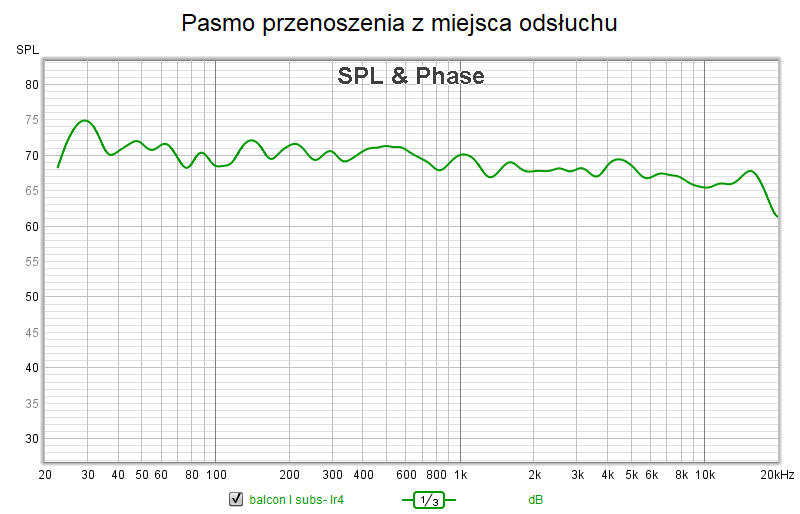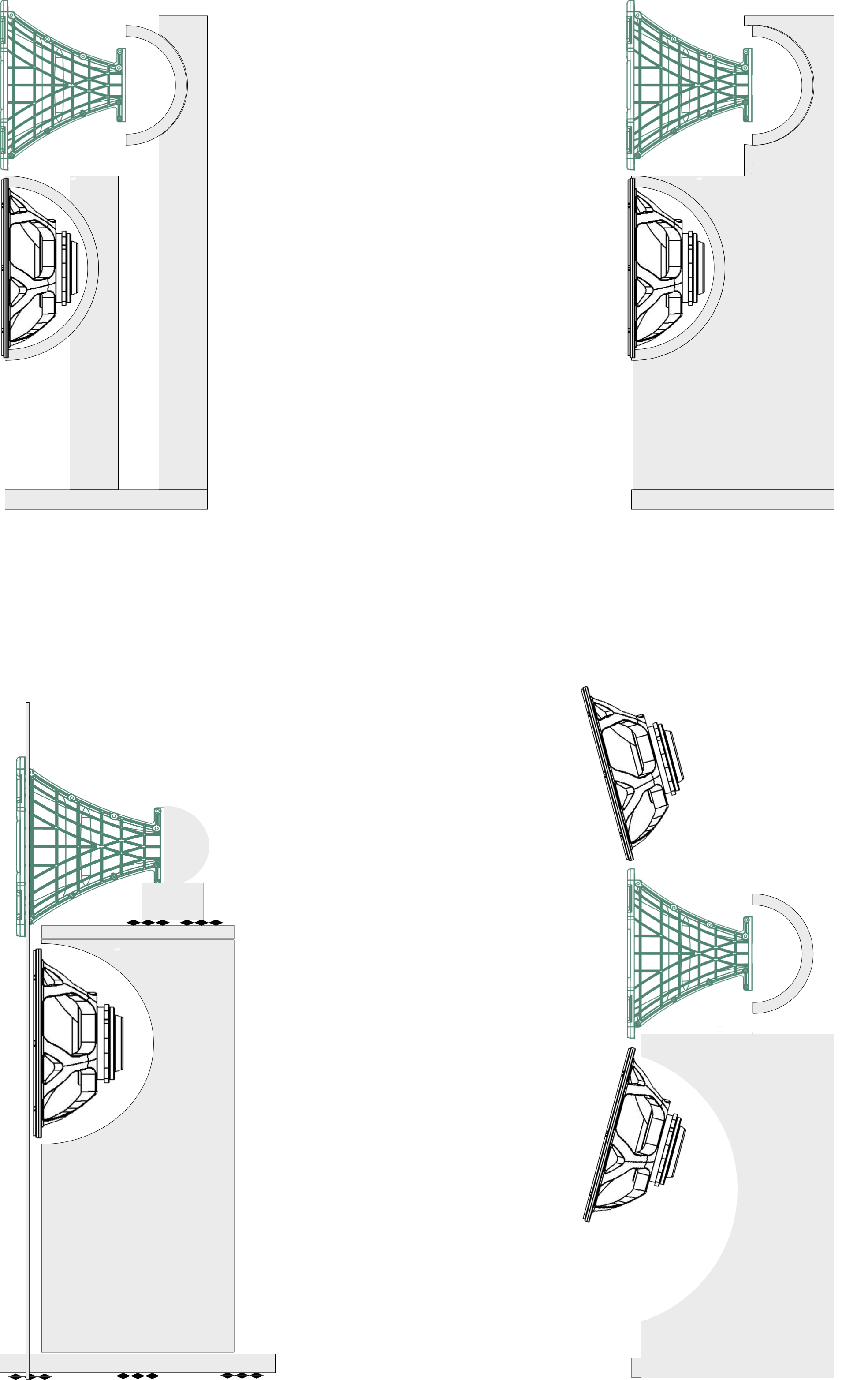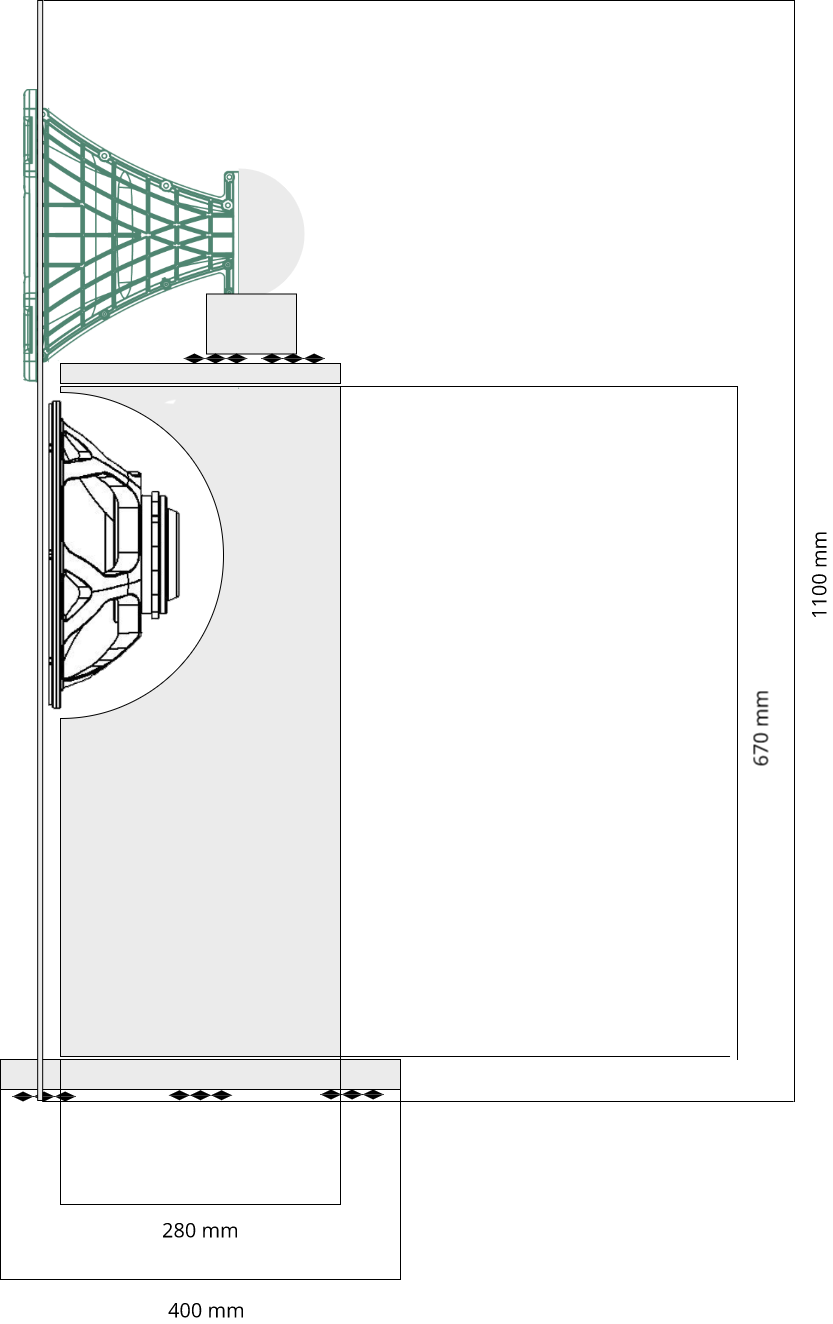on
Open Baffle Speaker With Horn Compression Driver. RCF ND950 / Beyma 12mwnd drivers.
Project Goal
I wanted a pair of loudspeakers that will work well in a normal living room without special acoustic treatement. I live in a beautiful apartment. Unfortunately, the room is quite lively. The room has painted walls, wooden floors and leather furniture. Upholstered furniture is not an option yet, because I have two small kids. It is very comfortable appartment to live in, but the sound is a bit lively to my taste. I wanted a drier sound than what I heard. In this room I listened to the Kef R500, Polk LSiM 703 and JBL 305 with and without DSP-based room correction. I tried Audyssey and Dirac from the correction systems.
I have a recording of how the Polk LSiM 703 sounded in this room. I recorded more or less from the listening position.
Here is the KEF R500 recording.
I had to use equalizer on both recordings to tame down 80Hz.
Possible solutions
When sound is bouncing off walls, floor and ceiling without losing much of its energy, we hear excessive reverberation. There are several ways to reduce the perceived reverberation. I know a few:
- Acoustic adaptation of the room: installation of sound-absorbing panels, a lot of upholstered furniture, thick carpets, acoustic ceilings and walls that absorb sound waves. All these solutions reduce the amount of reflected sound and amount of energy absorbed at a moment of time.
- Make loudspeakers to project more sound toward the listener. Most modern speakers are omnipolar and emit the sound in all directions. Instead of flying directly to the audience, a large proportion of the sound waves fly and bounce off the walls and floor, increasing reverberation. More directive speakers will emit sound toward the listener, but not toward the walls or floor/ceiling.
- Delaying reflected waves. Our ancestors lived in caves and our brains trained to filter out reflected sounds. The reverberation in the caves was much stronger than in present apartments, and over time the human brain learned to filter out the reverberation. For the brain to distinguish between direct and reflected sound, the latter must reach the ears a few milliseconds later than direct sound. The easiest way to do this is to move the columns away from the wall.
As this is our living room, I was limited in amount of acoustic treatment I can use. I placed carpet on the floor, double curtains on the windows, a couple of acoustic panels on the front and back walls. I tried a thicker rug, but it had no advantage over a thinner rug. As it was more difficult to clean thick carpet we left the thinner one. Probably, we will make an acoustic ceiling during renovation.
Project Description
I have tried a couple of loudspeaker designs that reduce reflections or make it easier to distinguish direct sound. In this article, I will describe a project that:
- Definitely sounds good,
- Reduces the interaction in the room and,
- Disappears in the space.
Here are a couple of recording.
Specs
3-way speakers. Frequency range from 30 Hz to 16 kHz. Measured from a distance of 3 m. The columns are 1 m from the front wall.

The loudspeakers provide stable images between the columns. In my room, when placed almost in an equilateral triangle with an edge of approx. 3 m, the images do not extend beyond the width of the loudspeakers. The loudspeakers cannot be located in space even from a distance of 1.5 m, which compares favorably with the KEF R500. The loudspeakers also do well when crossed to a point 0.5-1m in front of the listening position. This setting slightly widens the “sweet spot”. I first saw such placements in Ken Ishiwata’s presentations. During the presentation, he turned the loudspeakers inwards to create a bigger “sweet spot”. Turning-in loudspeakers reduces treble level and this must be compensated in the speaker settings.
Drivers
The RCF ND950 compression driver with HF950 horns covers the frequency range from 800 to 16000 Hz. The horn ensures even dispersion at an angle of approx. 90 degrees horizontally. You can move around the room and the amount of treble remains sufficient. Compared to the Eighteen Sound XT1465 horn, the RCF horns offer much more even high frequencies. In my opinion, the HF950 is clearly better suited for home listening than the XT1464.
The 12-inch Beyma 12mwnd mid-bass loudspeaker in an open enclosure plays from 80 to 800 Hz. The open design significantly reduces the sidewall reflections and adds a sense of space when compared to a bass-reflex or closed enclosure. Unfortunately, the open housing radiates much less bass than even a closed housing. To boost the bass response, I installed a transparent plexiglass pane on the front of the speaker. This helps the loudspeaker to produce bass frequencies.
It seems that Beyma stopped the production of this mid-bass speaker. I believe, it can be replaced with the Faital PR330 loudspeaker because its characteristics are very similar.
The subwoofers play up to 80 Hz. I made three subwoofers with 10 inch Peerless XLS 830452 drivers. In my experience, it’s better to have a few smaller, cheaper subwoofers than one but big one. Several smaller subwoofers provide more even bass. I bought these speakers used from a boat which had 16 of them. That seemed to be a great boat ;)
In my opinion, the open baffle loudspeaker with a 12-inch woofer sounds incomplete without subwoofers.
Enclousre
Listening to different loudspeakers, I noticed that small vibrations of the cabinet made it difficult for the loudspeaker to disappear in the space. The stronger the loudspeaker cabinet shakes, the more the musicians’ images move to the speakers. When building enclosures for closed-box speakers I wasn’t able to solve this problem. So, I decided that the best enclosure is the lack of it.
I had a few ideas on how to construct an open loudspeakers but do not create a front baffle. I did not want a baffle, because the baffle will vibrate due the bass speaker playing and will not allow the loudspeakers to disappear properly in the space.

In the end, I decided on the one on the bottom left as the easiest one to make.
(picture)
I had to isolate the horn from the vibrations of midbass speaker. Therefore, the horn rests on rubber pads, without being in stiff contact with the leg of the midbass speaker.
The front panel, made of plexiglass, serves as the front support of the tube. It does not touch the leg with the midbase speaker on it, but rests directly on the floor. When playing music, the compression speaker does not cause any noticeable vibration, so the plexiglass panel does not vibrate. Loudspeakers that do not vibrate better disappear into space. Only the music remains.
The leg with the mid-bass speaker is decoupled from the floor by 4 rubber Oehlbach spacers.

The design is relatively easy to build and does not vibrate.
Crossover And Amplifiers
I started with active crossover right from the beginning, because it allows you to quickly try different tunings, it is much cheaper and simpler than passive crossovers. There are several options:
- Active crossover unit like dbx DriveRack or Behringer DCX,
- A computer with multi-channel DAC. For example, multi-channel studio interface,
- A computer with a connect multi-channel AV receiver connected,
- Hypex Fusionamp plate amplifier.
I started with the 3rd option as the cheapest and more convenient. I connected the receiver to my computer using an HDMI cable. Computer software processes music signal and splits it for every driver. HDMI allows up to 8 channels of audio. Two 2-ways loudspeaker needs 2 channels. Subwoofer needs 1 channel. 7.1 AV receiver allows you to power 2 2-way loudspeakers and 3 subwoofers. With this approach we get a good value for very little money. You can buy a decent several-year-old receiver a couple hundreds of USD.
AV receivers may be a little underpowered to passive loudspeakers. However, with an active crossover the AV receiver’s amplifiers are connected to drivers directly without any passive filters in between. This makes a much easier load for the amplifiers and they play better than when powering passive loudspeakers. I recommend Denon AV-receivers as they seems to have the best S/N ratio I heard. A compression driver connected to X3500W receiver is almost completely quiet. Denon’s amplifiers have lower noise level than Hypex NCore.
I used small Intel NUC PC, and EqualizerAPO software to process the music signal. I describe how to use it here.
Currently, the speakers are driven by 2 Hypex FA123 boards and one Hypex FA502 board for subwoofers. I could connect subwoofers to FA123 boards, but in that case they won’t be playing mono. In my room mono subwoofers significantly improve the bass response, so it was worth buying a third board just for subwoofers.
Due to the very high efficiency, a slightly noticeable noise appears when the compression driver is connected directly to the Hypex amplifier. You need to lower the sensitivity of the compression driver to remove noise. The simplest solution is to connect the compression driver to the power amplifier through an 8 Ω resistor. For mid bass, I also used a resistor to keep the power amp working in more optimal power range above 1W. Both the horn and the mid bass are very sensitive and operate at fractions of a watt. The resistor reduces the sensitivity of the loudspeaker and allows the amplifier to operate in the optimal power range.
DSP Filters
I tried several crossover configurations: steep and shallow, linear-phase and minimal-phase. For my taste, the 2nd order filter sounds best, which I present below.
Compression Driver
- Low shelf 2. order @ 5000 Hz, Q 0.7, -9 dB,
- Peaking filter @ 1200 Hz, Q 1, -2 dB,
- Peaking filter @ 750 Hz, Q 2, -2 dB,
- Highpass 1. order @ 800 Hz,
- Delay 1,7 ms,
- Gain -10 dB.
Midbass Driver
- Peaking filter @ 2300 Hz, Q 3, -4 dB,
- Peaking filter @ 634 Hz, Q 1, -7 dB,
- Peaking filter @ 120 Hz, Q 2, -3 dB,
- Highpass 2. order @ 80 Hz,
- Lowpass 1. order @ 800 Hz,
- Lowpass 1. order @ 800 Hz,
- Delay 2,03 ms,
- Inverted polarity.
Głośnik subwooferowy
- Lowpass 1. order @ 100 Hz,
- Lowpass 1. order @ 100 Hz,
- Gain 7 dB.
Subwoofers have seperal additional peak filters I don’t present here. These are very room-specific and don’t have any value. You have to measure and find the subwoofer settings yourself.
These filters provide the following frequency response at the listening position:
